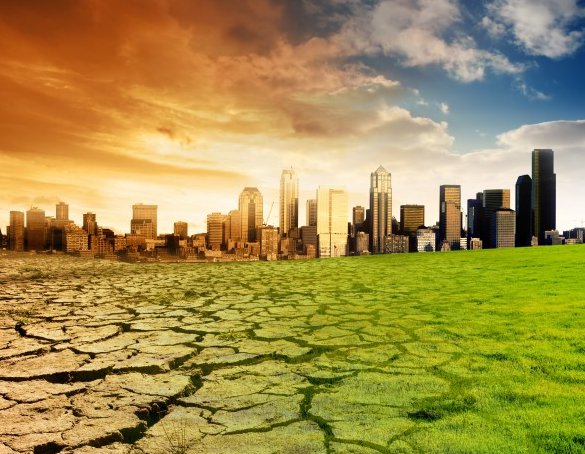Climate change [ctd.]

In previous articles, we clearly realized that both human activities and natural phenomena are responsible for the current change in the global climate system. Further, we understood that the damaging effects of anthropogenic causes are more adverse than those of the natural phenomena.
We all are struggling in the changing climate in our day to day life. As we discussed, climate change results in disasters and deadly extreme events. Droughts, floods, cyclones, heat waves and sea level rise are just a few. The increasing trend of the climate change means frequent and more dreadful disasters, more deaths and economic losses. Our future would be most vulnerable as anthropogenic greenhouse gases continue to accumulate in the atmosphere accelerating the climate change. We need to address the root causes in order to tackle or decelerate the climate change.
How to fight against climate change: Climate change mitigation
Climate change is largely governed by greenhouse gases in the atmosphere. So, almost every attempt of fighting against the climate change requires depressing the concentration of atmospheric greenhouse gasses. There are two primary approaches to lower the atmospheric greenhouse gases: Removal of greenhouse gases from the atmosphere (carbon sequestration) and reducing the emission of greenhouse gases. As a whole, any anthropogenic intervention of lowering the emissions and enhancing the sinks of greenhouse gases could be defined as a climate change mitigation strategy.
To begin with, let’s see how to remove greenhouse gases from the atmosphere. There are dozens of natural and artificial greenhouse gas removal mechanisms. Generally, both natural and artificial reservoirs which absorb and store greenhouse gases are known as sinks. Trees, oceans and soils and savanna are the most important natural sinks. Anyway, we have nothing to do with natural mechanisms of sinks. So,
Let the trees do their job.
Let the oceans do their job.
Let the soils do their job.
And let’s do what we must do.
It is our duty to enhance the capacity of sinks and minimize our emissions.
Reforestation and carbon dioxide capture at power plants would play a vital role in carbon dioxide sequestration. However, the potential of artificial greenhouse gas removing is limited in the game of climate change mitigation due to economic and technological challenges. Reforestation would be a great option but does not seem to be practical in most cases since ever-increasing human needs require more and more lands. So, the truth is that our planet is not going to accommodate more trees.
Therefore, in practice, it is clear that removal of greenhouse gases from the atmosphere is an extremely challenging task.
Now let’s take a look at the following example to see why it is challenging.
A plant would take about 40 years to sequester one ton of carbon dioxide [1] whereas you add the same amount of carbon dioxide by driving your car around 5000 km [2]. Simply, pumping a ton of greenhouse gases into the atmosphere is much easier than removing the same amount from the atmosphere.
Considering all these facts, we can conclude that the most effective way of mitigating the climate change is nothing but minimizing the emissions. In next article, let’s study most forceful strategies to minimize anthropogenic emissions.
